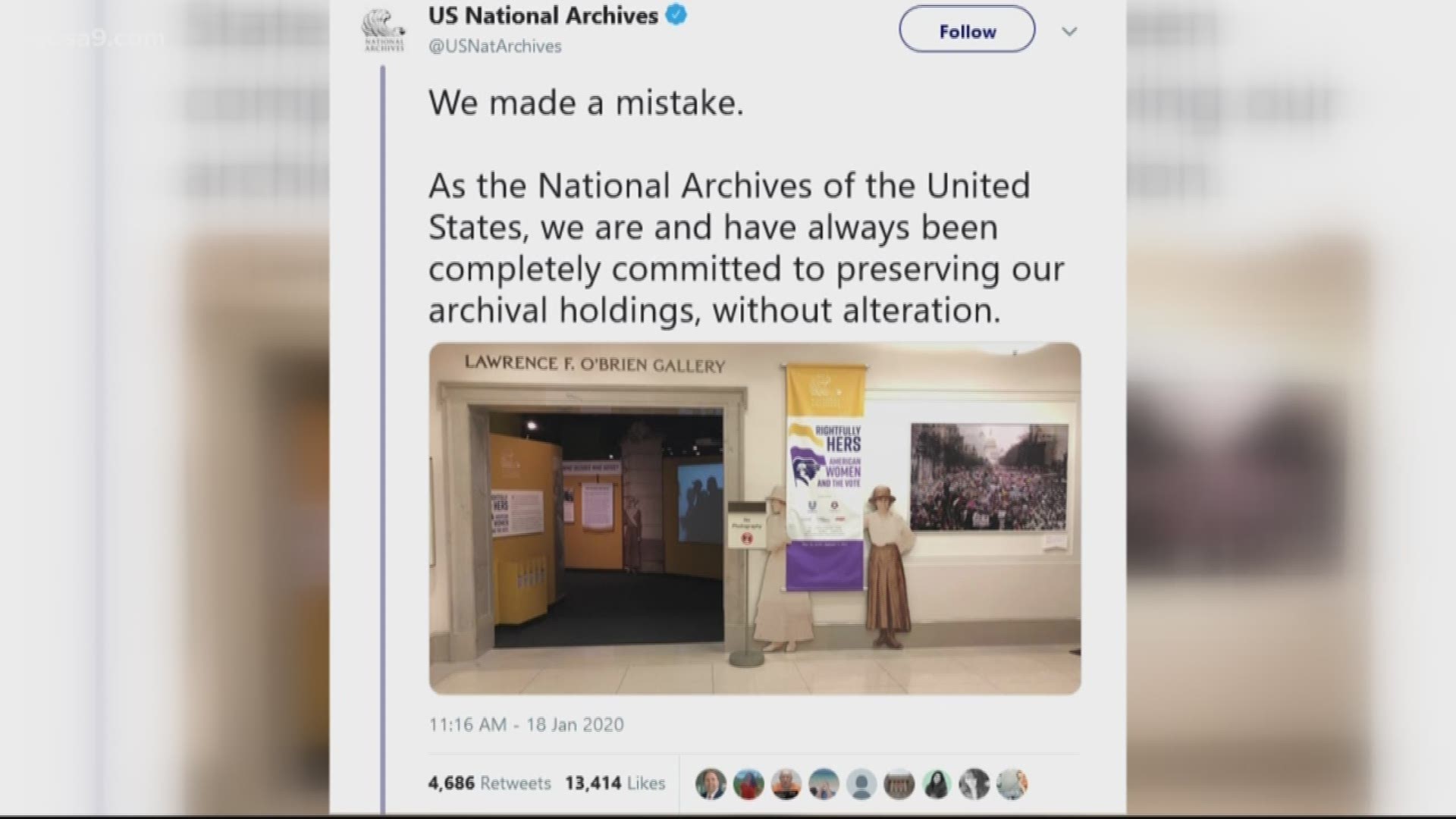Editor's note: The thumbnail image used in this story is not the image in question. A link to that image can be found later in this story.
The National Archives has not only apologized for displaying an altered photo of the 2017 Women's March in Washington, DC, it has also removed the doctored version and replaced it with the original.
In a blog post, archivist David Ferriero said the doctored photo, which was commercially licensed, was part of a lenticular display along with a 1913 women's suffrage march photo taken from a similar angle. The idea was that when someone walked by the display, it would transform from one image to the other.
Ferriero said the image was blurred to cover some protest signs that included references to President Donald Trump and the female anatomy. You can see the original, unedited image here.
"We wanted to use the 2017 Women’s March image to connect the suffrage exhibit with relevant issues today. We also wanted to avoid accusations of partisanship or complaints that we displayed inappropriate language in a family-friendly Federal museum," Ferriero wrote.
But when the doctored image was discovered, it drew immediate public condemnation from those who saw this as the National Archives censoring the recorded history.
Ferriero admitted the alteration was a mistake.
"Our action made it appear as if we did not understand the importance of our unique charge: as an archives, we must present materials – whether they are ours or not – without alteration; as a museum proudly celebrating the accomplishments of women, we should accurately present not silence the voices of women; and as a Federal agency serving the American public, we must incorporate non-partisanship into everything we do," he wrote.
Ferriero also claims there was no outside influence in the decision to alter the photo in the first place.
Ferriero said the doctored lenticular image has been removed. It has been replaced by the separate images of the 1913 women's suffrage event and the original, unedited 1917 photo. He says a new lenticular image will be produced using those two photos.
The image is part of the "Rightfully Hers: American Women and the Vote" exhibit.
The doctored image was discovered by Washington Post reporter Joe Heim. He said on Twitter he was visiting the exhibit and noticed some signs had been blurred. Heim said he looked up the original photo, printed it out, and brought it back to the National Archives to compare the two.

